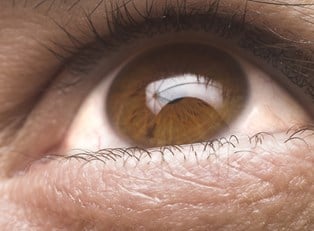Glaucoma is the second leading cause of blindness. It is developed as damage to the optic nerve leads to irreversible loss of vision. There are three types of glaucoma: open-angle (OAG), closed-angle (CAG), and congenital. The direct cause of glaucoma is unknown, but there are several factors that increase your risk of glaucoma.
Risk Factors
OAG is often linked with high intraocular pressure in the eyes. Doctors have not gone so far as to say it is a cause, but they believe treating intraocular pressure can significantly reduce the risk of OAG. Speaking demographically, people more than 40 years old are at a much higher risk of developing glaucoma, and women at this age are especially susceptible to CAG. Ethnicity is also a factor; African-American people are more likely to develop glaucoma than Caucasian people, and Inuit people and people from East Asia are more likely to develop CAG.
Family history is a big indicator of the risk of glaucoma. Infants can even inherit the condition from their parents. Pregnant women also risk their infant developing glaucoma if they have an infection such as rubella during pregnancy.
Once one eye develops glaucoma, the other eye is very likely to develop the disease. It is also thought that people who are farsighted have a higher risk because their eyes are smaller and do not drain as easily. Diabetics are at a much higher risk as well.
Minimizing Risk
Obviously, nothing can be done about your family history, age, or ethnicity, but there are some ways to minimize your risk of developing glaucoma. Vision-preserving eye drops can be prescribed when an optometrist feels a patient is at risk. This is a big help to people who experience high eye pressure and are at the most risk. The best thing you can do to decrease your risk is to have your eyes checked regularly. Medicare and other private insurance carriers cover dilated eye exams that should be used to check for signs of glaucoma and other diseases. Wearing eye protection is always a good idea to prevent any damage to the eye.
You can also minimize your risk for glaucoma by following a diet plan to reduce the risk of diabetes. Diabetics are at higher risk for glaucoma and many other serious diseases. If you control your weight, eat right, and exercise, you can avoid this gateway disease that can lead to additional health issues.
Glaucoma is a serious disease, and people should be well aware of its dangers. If you are at risk for developing glaucoma, see an optometrist for any additional tips or suggestions for keeping your eyes healthy.



